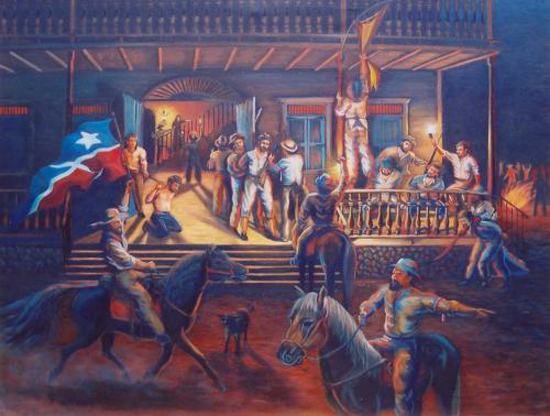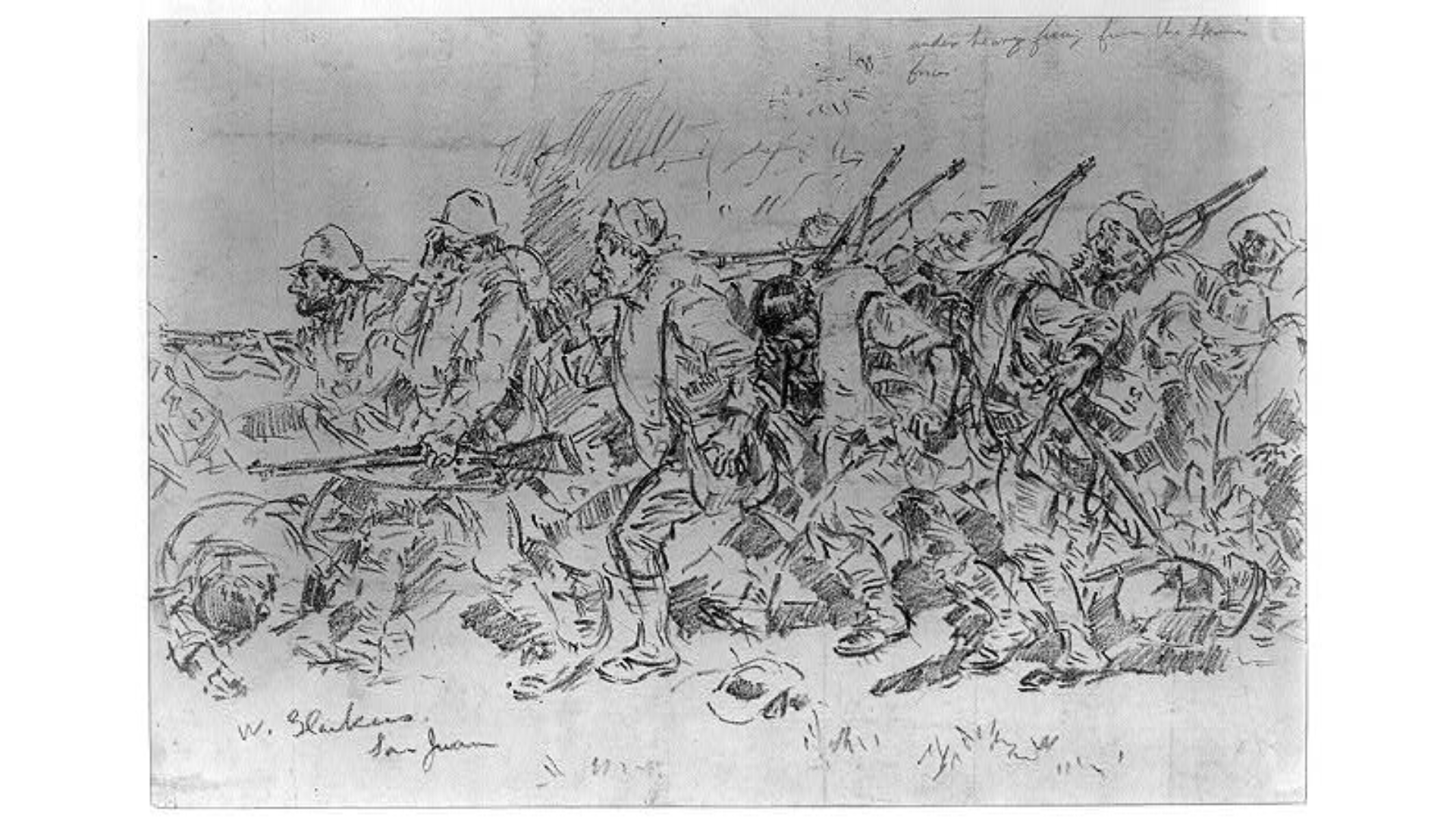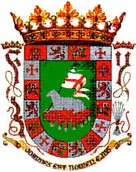
"An artist depiction of El Grito De Lares." [7]
Click on the words Intentona de Yauco and Treaty of Paris highlighted in blue/gray for more information.
From November 19th, 1493, until July 25th, 1898, Puerto Rico was a colony of Spain. "The Lares Revolt of 1868 sought the abolition of slavery, freedom of the press and commerce, and the independence of Puerto Rico. Six hundred men, led by liberals, drew up a provisional constitution and declared the Puerto Rican Republic, but they were defeated in their first clash with Spanish troops. Despite the movements quick defeat, during the 20th century the revolt has come to be viewed as the beginning of Puerto Rico's struggle for independence." [6] There were other unsuccessful revolts where Puerto Ricans communicated their desire for independence, such as the Intentona de Yauco of 1896. Spain communicated that they would not grant Puerto Rico independence by ignoring these revolts.

"An artist depiction of El Grito De Lares." [7]
On November 25th, 1897, "Bowing to U.S. pressure to improve its relationships with its colonies, Spain, under the leadership of Prime Minister Práxedes Mateo Sagasta agreed to an autonomous constitution for Puerto Rico." [8]
As a result of this written communication, Puerto Rico became autonomous, but just several months later, Spain ceded Puerto Rico to the U.S. in the Treaty of Paris, to end the Spanish-American war. Puerto Rico's autonomous government never saw its light.

"6th infantry going into action under heavy firing from the Spanish forces." [9]

Escudo [Seal] [10]
["The seal of Puerto Rico has the symbols of our history and culture. It was given by the Spanish crown in 1511, but it wasn't until March 9th of 1905, that the first seal of arms was approved by the law... For this reason, our seal is the only one that reminds the presence of Spain in the New World."] [10]
Joaquin Gonzalez : Junior Individual
Website : 1,147 | Process Paper : 498 | Multimedia : 3:46 Minutes